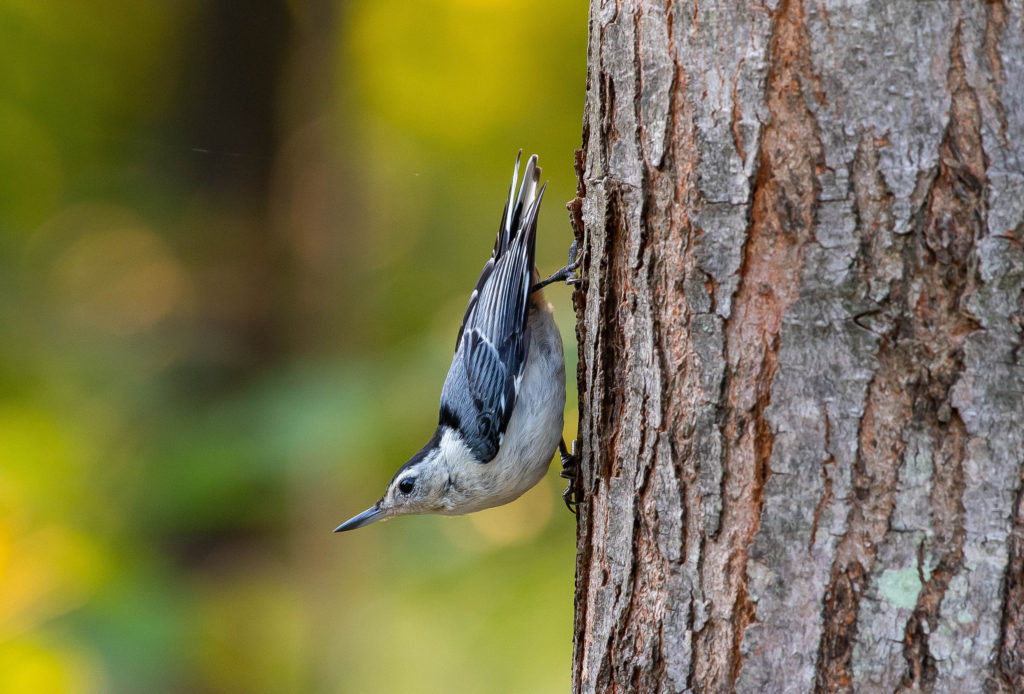Learning from a Nuthatch

Another delightful holiday season is wrapping up, and family and friends are hunkered down in anticipation of the cold days of midwinter and I am learning from a Nuthatch. The winter solstice brought an end to short dark days and started our slow climb towards summer. Here in Bozeman, north of Yellowstone National Park, the sun is setting at around 4:30pm. Though the daylight hours are few – and I need a headlamp to ski after work – there’s still plenty to see and learn, especially if I’m lucky enough to be outside in the right place at the right time.
It is easy to spend hours outside during the summer, when the sun is out until 10pm and we’re working three daily trips on the Snake River. We watch the play of light on the majestic Teton Range. We enjoy temperatures that can range from 30 to 80 in a single day. We listen for birds singing from the banks while we drift down quiet side channels. And we float past plenty of animals: sometimes hidden, sometimes in full view.
We miss these things during the winter. Yes, there are beautiful places in Grand Teton National Park where you can ski tour and find moose or elk taking shelter, and gray jays and chickadees may fly over to your picnic site to salvage crumbs from your PB & J. But, it is usually cold in December and January, so our outside time is a limited. Here in Bozeman, I set up feeders with seed and suet for the local bird life and in essence lure the outside to our home. Sometimes I see the oddest things.
One of my favorite feeder visitors is the red-breasted nuthatch. For years my family and I have enjoyed watching them take solitary seeds from the feeder and stash them in a nearby Spruce tree. The nuthatch scurries up and down the tree trunk, holding on thanks to the large on its rear-facing toe, depositing the seeds in tiny nooks between the bark lobes as food insurance for later. It turns out they prefer to eat insects in the summer, and will eat Conifer seeds during the winter. But, when they have access to feeder food they take seeds and larger morsels to crannies in the surrounding trees and hammer them apart to eat later.
And watching this feeder display is only part of the experience. I was outside this morning, shoveling another 6 inches of fresh snow, when I noticed the nutmeg color of a little nuthatch as he flew by to add to his seed stash. I stopped to watch and was rewarded with his piercing voice singing out a tiny “yank” as he stored his treasure. How wonderful it is to hear as well as see our little forest friends! And thanks to the nuthatch, I begin the New Year with a new song.
Nuthatches often nest in standing dead trees that are critical to the life cycle of a healthy forest. So, if you live in nuthatch habitat and have some dead wood still standing, consider leaving it up to allow birds and other critters to use it. Or try using the Cornell’s Lab of Ornithology’s directions to build your own nuthatch house. The more, the merrier!
